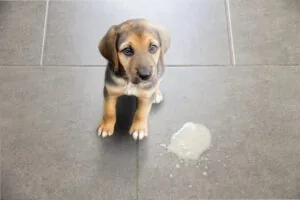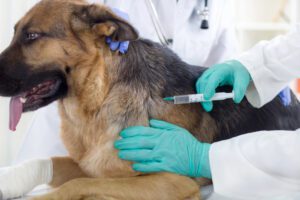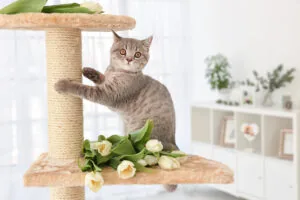Pet Safety Tips for Halloween
Halloween’s costumes, decorations, and steady stream of visitors can create a spooky experience for pets. Protect your furry friends by following these safety tips to prevent injuries, poisoning, or getting lost.
Manage Holiday Stress for Pets
Before the festivities begin, place your pets in a quiet room to shield them from the Halloween excitement. Consider putting dogs that may dash for the door in a crate with a treat-filled toy and soft music. Feliway can help keep cats calm. Minimize noise by greeting trick-or-treaters outside, avoiding doorbells and knocks. For Halloween parties, ensure pets stay in their safe room, away from potentially startling masks and costumes. Inform guests of the off-limits area with a door sign. When trick-or-treating, it’s best to leave dogs at home, as the excitement can lead to lost or stressed pets.
Safeguard Pets from Outdoor Risks
Bringing pets indoors before dark is essential, particularly on Halloween. The flurry of costumes and increased foot traffic can be overwhelming for pets, often resulting in fear or anxiety. Indoors, they are shielded from the unsettling sights and sounds.
Maintain their safety by ensuring that all pets have current ID tags and a registered microchip with up-to-date contact information. This helps in quick recovery should a pet accidentally escape. The opening and closing of doors for trick-or-treaters present opportunities for pets to slip out unnoticed, making identification crucial.
It’s also wise to keep a recent photo of your pet handy. In the unfortunate event they go missing, photos are invaluable for creating lost pet flyers and for identifying them quickly if found. Familiarizing your pets with these IDs and microchips in advance, and ensuring they are comfortable at home, goes a long way in keeping them safe during the bustling celebrations.
Consider Costumes Carefully
Dressing pets in costumes during Halloween can be a fun tradition, but it’s important to consider your pet’s comfort and safety. For many pets, wearing a costume can be stressful and even distressing. The ASPCA recommends only dressing up pets if they are clearly comfortable and happy in their attire. Look for signs of discomfort such as panting, restlessness, and reluctance to move, which indicate that your pet may not be enjoying the experience.
If you decide to dress your pet, choose a costume that does not restrict their movement, sight, or breathing. This is crucial to ensure the pet’s well-being and prevent unnecessary stress or accidents. Costumes should be checked for small, dangling pieces or items that could be easily chewed off, as these pose choking hazards. Outfits that fit improperly can become twisted or caught on objects, leading to injuries or even potentially dangerous situations.
To provide a safer and more comfortable way for your pet to participate in Halloween festivities, consider a festive bandana. Bandanas are less likely to restrict your pet’s natural movements and can still add a fun, seasonal touch without the risks associated with full costumes.
By prioritizing your pet’s comfort and ensuring their costume meets these safety guidelines, you can help them enjoy Halloween as much as you do.
Be Wary of Decorations
Jack-o-Lanterns
Lit pumpkins can be hazardous if knocked over, potentially causing burns or fires, although small pumpkin pieces can be a healthy treat for pets. Consult your veterinarian before offering new treats.
Glow Sticks
These can be more trouble than they’re worth if pets chew them open. Although the liquid isn’t highly toxic, it tastes bad, causing excessive drooling and unusual behavior. Provide water or a small meal if your pet gets into one to help clear their mouth.
Electrical Decorations
Keep these out of reach. Chewed electrical cords pose shock risks, while ingested batteries can cause burns or blockages. Always supervise pets around such dangers.
Candy is Not for Pets
Xylitol
Extremely toxic to dogs, this sugar substitute is in many products like sugar-free gum and some chocolates. Ensure these items are kept far from curious pets.
Chocolate
A frequent cause of veterinary calls, chocolate is toxic to both dogs and cats, with darker varieties posing more risk. While many are aware that chocolate harms dogs, its danger to cats is less known.
Candy Packaging
Wrappers and bags can cause digestive blockages if ingested, leading to serious health issues. Keep these materials far from pets and watch for signs of discomfort.
If you suspect your pet has consumed something harmful, contact the ASPCA Animal Poison Control Center at 888-426-4435 or the Pet Poison Helpline at 855-764-7661.
Additionally, locate the nearest emergency veterinary clinic and keep this information accessible.
Share This Post
Recent Posts
About Shallowford Animal Hospital
Shallowford Animal Hospital and The Pet Spa at Shallowford are dedicated to the exceptional, compassionate care your pet deserves. Pets hold a very special place in our families, and we treat yours like our own.



